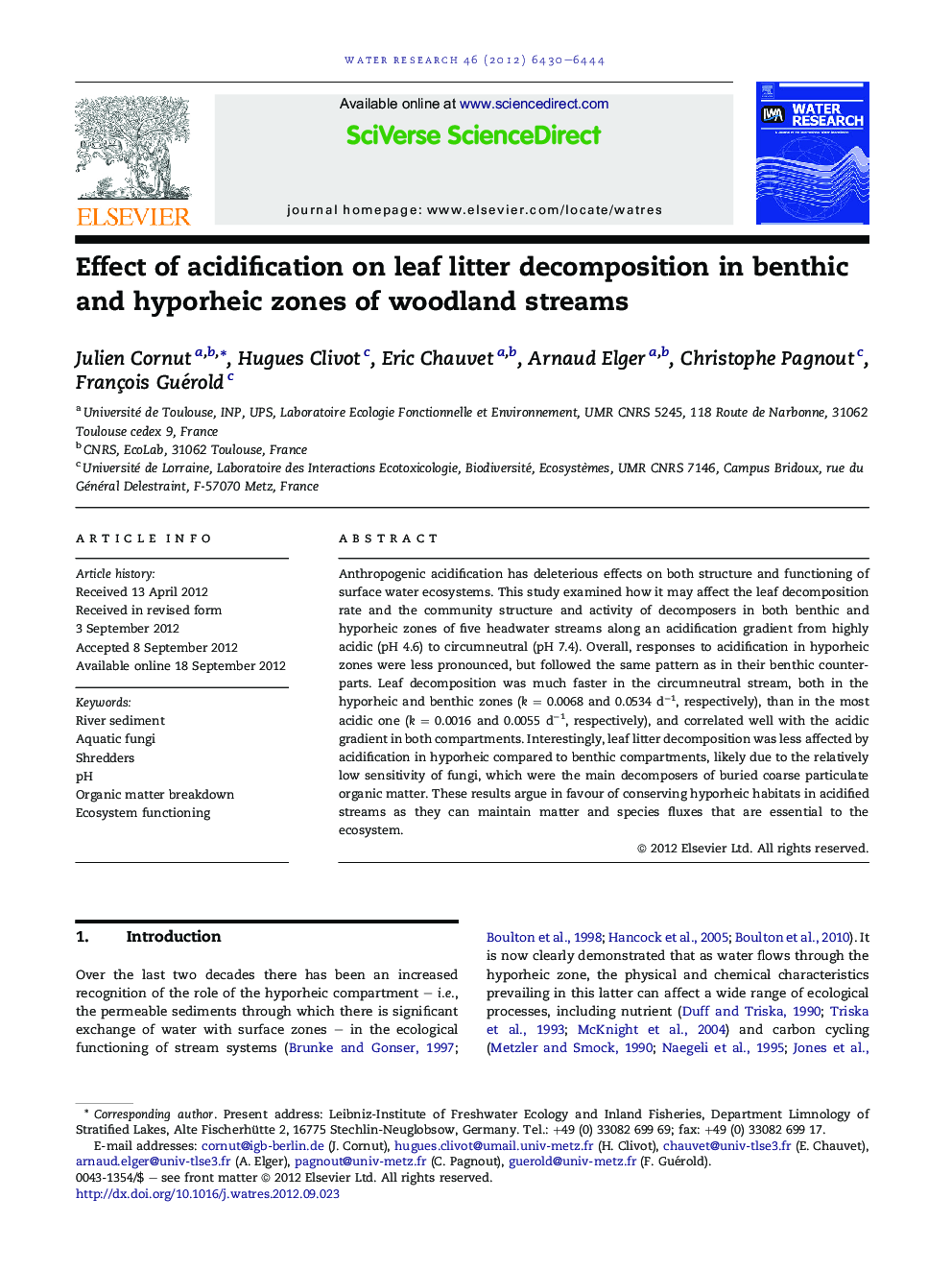| Article ID | Journal | Published Year | Pages | File Type |
|---|---|---|---|---|
| 4482459 | Water Research | 2012 | 15 Pages |
Anthropogenic acidification has deleterious effects on both structure and functioning of surface water ecosystems. This study examined how it may affect the leaf decomposition rate and the community structure and activity of decomposers in both benthic and hyporheic zones of five headwater streams along an acidification gradient from highly acidic (pH 4.6) to circumneutral (pH 7.4). Overall, responses to acidification in hyporheic zones were less pronounced, but followed the same pattern as in their benthic counterparts. Leaf decomposition was much faster in the circumneutral stream, both in the hyporheic and benthic zones (k = 0.0068 and 0.0534 d−1, respectively), than in the most acidic one (k = 0.0016 and 0.0055 d−1, respectively), and correlated well with the acidic gradient in both compartments. Interestingly, leaf litter decomposition was less affected by acidification in hyporheic compared to benthic compartments, likely due to the relatively low sensitivity of fungi, which were the main decomposers of buried coarse particulate organic matter. These results argue in favour of conserving hyporheic habitats in acidified streams as they can maintain matter and species fluxes that are essential to the ecosystem.
Graphical abstractFigure optionsDownload full-size imageDownload high-quality image (128 K)Download as PowerPoint slideHighlights► Acidification reduced leaf decomposition both in benthic and hyporheic zones (HZ). ► Acidification affects more benthic than HZ of streams. ► Due to the lack of shredders in HZ, fungi were more involved in leaf decomposition. ► Fungi in HZ guarantee the maintenance of carbon flux in impaired streams. ► Assessing functional integrity of HZ is crucial in a stream management perspective.
